تقييم معلمي طلبة صعوبات التعلم لأثر العلاج بالفن التشكيلي على الصحة النفسية والعقلية لطلبة صعوبات التعلم بالحلقة الثانية في سلطنة عمان
DOI:
https://doi.org/10.56989/benkj.v5i5.1462الكلمات المفتاحية:
صعوبات التعلم، الصحة النفسية، الصحة العقلية، العلاج بالفن التشكيلي، العلاج بالفن، التعليم في عمانالملخص
هدفت هذه الدراسة إلى الكشف عن تقييم معلمي طلبة صعوبات التعلم لأثر العلاج بالفن التشكيلي على الصحة النفسية والعقلية لدى عينة من طلبة صعوبات التعلم بمحافظة جنوب الباطنة في سلطنة عمان. اعتمدت الباحثة على المنهج النوعي للإجابة على أسئلة الدراسة، من خلال أداة المقابلة. تم تطبيق الدراسة على المعلمين المشاركين في الجلسات العلاجية للتدخل العلاجي المنفذ بالممارسات الفنية المعتمدة على أنشطة الفن التشكيلي، والمحتوى العلمي لمادة اللغة العربية في القراءة، والتعبير الشفوي، على مستوى تقدير الذات، ومهارة التواصل الاجتماعي، ومهارة التعبير الشفوي، لدى طلبة صعوبات اللغة الشفهية وعسر القراءة. أشارت نتائج الدراسة إلى وجود أثر للتدخل العلاجي على طلبة صعوبات اللغة الشفهية وعسر القراءة في تحسين الصحة النفسية والعقلية المتمثلة في تقير الذات والتواصل الاجتماعي والتعبير الشفوي. وأوصت الباحثة بضرورة تقييم التدخلات المرتبطة بالعلاج بالفن التشكيلي في البيئة المدرسية وعلى مجالات مختلفة وفئات مختلفة.
This study aimed to explore teachers’ evaluation of the impact of art therapy on the psychological and mental well-being of a sample of students with learning difficulties in South Al Batinah Governorate, Sultanate of Oman. The researcher employed a qualitative approach to address the research questions, utilizing the interview as the primary data collection tool. The study was conducted with teachers who participated in the therapeutic intervention sessions, which were based on visual arts practices and integrated with the Arabic language curriculum content in reading and oral expression. The intervention targeted improvements in self-esteem, social communication skills, and oral expression among students with verbal language difficulties and dyslexia. The findings indicated that the therapeutic intervention had a positive effect on students with verbal language difficulties and dyslexia, enhancing their psychological and mental well-being—specifically in terms of self-esteem, social interaction, and oral expression skills. The researcher recommended the necessity of evaluating art therapy interventions within school environments, across various domains and among different student populations.
المقاييس
المراجع
أولاً. المراجع العربية:
إمام، محمود؛ وعبد العزيز، إيهاب. (2017). تقنين قائمة تشخيص صعوبات التعلم النوعية لدى تلاميذ الصفوف من 1-6 في سلطنة عمان. مجلة التربية الخاصة، 6(20)، 97-137.
السالمي، آسيا حمد. (2019). أثر برنامج تدريبي معتمد على منهج الفنون التشكيلية في خفض الاضطرابات النفسية والانفعالية لدى بعض طلبة مدارس محافظة جنوب الباطنة سلطنة عمان (رسالة ماجستير غير منشورة). جامعة صحار، صحار، سلطنة عمان.
السعيد، هلا. (2019). استراتيجيات التعامل مع الأشخاص ذوي الإعاقة من خلال الفن التشكيلي. (ط1). عَمان: دار وائل للنشر والتوزيع.
بو الشوش، نور الدين. (2020). دور المدرسة في الصحة النفسية للتلميذ. المجلة العلمية للعلوم التربوية والصحة النفسية، 2(4)، 269-257.
حسين، فينك. (2022). استخدام تكنولوجيا التعليم في المدارس الأساسية من وجهة نظر المعلمين في محافظة أربيل، إقليم كردستان-العراق على وفق بعض المتغيرات. Psychological Science، 33(01A).
علاوي، مصطفى؛ وشويخ، سهاد. (2021). استراتيجيات التدريس الحديثة ودورها في الارتقاء بجودة التعليم: دراسة نظرية. AL GHAREE for Economics and Administration Sciences، 17(3) (عدد خاص).
وزارة التربية والتعليم. (2023). دليل الإحصاء السنوي بالمديرية العامة للتربية والتعليم بمحافظة جنوب الباطنة.
ثانياً. المراجع الأجنبية:
Abbas, A., Muhammad, H. S., Naji, N. S., & Kathim, J. A. (2021). The Effect of the Physical and Artistic Education Lesson Through Play and Art in Developing Some Motor Abilities and Reducing Mobility for Pupils in the Fifth Grade of Primary School of the Primary Stage. Medico-Legal Update, 12(13), 4144–4149. https://doi.org/10.37506/mlu.v21i1.2505
Adoni- Kroyanker, M., Regev, D., Snir, S., Orkibi, H., & Shakarov, I. (2019). Practices and challenges in implementing art therapy in the school system. International Journal of Art Therapy: Inscape, 24(1), 40–49. https://doi.org/10.1080/17454832.2018.1536726
Afan, M. (2018). DIROOSATUN TAHLIILIIYYATUN ‘ALA AL AKHTHO’I ANNAHWIYYATI FII MAADATI AL INSYAAI LADAY THULLAB ASSHOFF AL ‘AASYIR (A) WA (B) ALMADROSAH AL’AALIYYAH “AL IRSYAD” BUTUH, TENGARAN, SEMARANG SANATA 2018. IAIN SALATIGA.
Akhavan Tafti, M., Rajabpour Azizi, Z., & Mohamadzadeh, S. (2021). A comparison of the diagnostic power of FEATS and Bender-Gestalt test in identifying the problems of students with and without specific learning disorders. Arts in Psychotherapy, 73(January), 101760. https://doi.org/10.1016/j.aip.2021.101760
Al Maqbali, R. A., & Alfawair, A. M. J. (2020). The Level of Psychological Hardiness among Female Teachers of Children with Learning Disabilities in the Sultanate of Oman: Descriptive Study: مستوى الصلابة النفسية لدى معلمات الأطفال ذوي صعوبات التعلم في سلطنة عمان: دراسة وصفية مجلة العلوم التربوية والنفسية. 4(38)، 75–92.
Azizi, M. R., Azizi, Z. R., Tafti, M. A., Azizi, M. R., & Azizi, Z. R. (2022). Comparing the Graphic Performance of Students With and Without SLDs and ADHD Based on FEATS Comparing the Graphic Performance of Students With and Without SLDs and ADHD Based on FEATS. Art Therapy, 0(0), 1–11. https://doi.org/10.1080/07421656.2022.2030621
Bartosh, O. P., & Bartosh, T. P. (2020). The effectiveness of various types of psychological correction of anxiety in primary school. Behavioral Sciences, 10(1), 2–9. https://doi.org/10.3390/bs10010020
Bokoch, R., & Hass-Cohen, N. (2021). Effectiveness of a School-Based Mindfulness and Art Therapy Group Program. Art Therapy, 38(3), 117–126. https://doi.org/10.1080/07421656.2020.1807876
Beauregard, C., Papazian-Zohrabian, G., & Rousseau, C. (2017). Connecting identities through drawing: Relationships between identities in images drawn by immigrant students. Arts in Psychotherapy, 56, 83–92. https://doi.org/10.1016/j.aip.2017.08.003
Crane, T., & Byrne, L. (2020). The Arts in Psychotherapy Risk, rupture and change : Exploring the liminal space of the Open Studio in art therapy education. The Arts in Psychotherapy, 69(July 2019), 101666. https://doi.org/10.1016/j.aip.2020.101666
Creswell, J. W., & Creswell, J. D. (2017). Research design: Qualitative, quantitative, and mixed methods approaches. Sage publications.
Creswell, J. W., & Poth, C. N. (2016). Qualitative inquiry and research design: Choosing among five approaches. Sage publications.
Crowley, S., Zhou, M., & Ryan, J. (2018). Language Development in Children. Journal of Child Psychology, 45(3), 234-245.
Eriksson, M., Ghazinour, M., & Hammarström, A. (2018). Different uses of Bronfenbrenner’s ecological theory in public mental health research: what is their value for guiding public mental health policy and practice? Social Theory & Health, 16(4), 414–433.
Galderisi, S., Heinz, A., Kastrup, M., Beezhold, J., & Sartorius, N. (2017). A proposed new definition of mental health. Psychiatria Hungarica, 51(3), 407–411.
Glowacki-Dudka, M., Lawrence, R., Merrill, H., & Rose, A. (2010). Proceedings Editor Graduate Student Research Paper Awards Committee.
Harpazi, S., Regev, D., Snir, S., & Raubach-Kaspy, R. (2020). Perceptions of Art Therapy in Adolescent Clients Treated Within the School System. Frontiers in Psychology, 11(November). https://doi.org/10.3389/fpsyg.2020.518304
Hylton, E., Malley, A., & Ironson, G. (2019). Improvements in adolescent mental health and positive affect using creative arts therapy after a school shooting: A pilot study. Arts in Psychotherapy, 65, 101586. https://doi.org/10.1016/j.aip.2019.101586
Johnson, R. B. and L. B. C. (2024). Research Design: Quantitative, Qualitative, Mixed Methods, Arts-Based, and Community-Based Participatory Research Approaches.
Khasawneh, M. A. S. (2021). The extra-curricular environmental activities as practiced by English language students with learning difficulties from their teachers’ point of view. Science and Education, 2(4), 275–287.
Korman-hacohen, S., & Regev, D. (2022). Creative Arts Therapy in the “Remote Therapeutic Response” Format in the Education System.
Kroyanker, M. A.-, Regev, D., Snir, S., Orkibi, H., & Snir, S. (2019). Practices and challenges in implementing art therapy in the school system Practices and challenges in implementing art therapy in the school system. 4832. https://doi.org/10.1080/17454832.2018.1536726
Levine, G. N., Cohen, B. E., Commodore-Mensah, Y., Fleury, J., Huffman, J. C., Khalid, U., Labarthe, D. R., Lavretsky, H., Michos, E. D., & Spatz, E. S. (2021). Psychological health, well-being, and the mind-heart-body connection: a scientific statement from the American Heart Association. Circulation, 143(10), e763–e783.
Malboeuf-Hurtubise, C., Léger-Goodes, T., Mageau, G. A., Taylor, G., Herba, C. M., Chadi, N., & Lefrançois, D. (2021). Online art therapy in elementary schools during COVID-19: results from a randomized cluster pilot and feasibility study and impact on mental health. Child and Adolescent Psychiatry and Mental Health, 15(1), 1–11. https://doi.org/10.1186/s13034-021-00367-5
Mason, P. (2005). Visual data in applied qualitative research: Lessons from experience. Qualitative Research, 5(3), 325–346. https://doi.org/10.1177/1468794105054458
Maxwell, J. A. (2013). Designing a Qualitative Study.
Merriam, S. B. ., & Tisdell, E. J. . (2016). Qualitative research: A guide to design and implementation. John Wiley & Sons.
McDonald, A., & Holttum, S. (2020). Primary-school-based art therapy: A mixed methods comparison study on children’s classroom learning. International Journal of Art Therapy: Inscape, 119–131. https://doi.org/10.1080/17454832.2020.1760906
McDonald, A., Holttum, S., & Drey, N. S. J. (2019). Primary-school-based art therapy: exploratory study of changes in children’s social, emotional and mental health. International Journal of Art Therapy: Inscape, 24(3), 125–138. https://doi.org/10.1080/17454832.2019.1634115
McDonald, A., & Drey, N. S. J. (2018). Primary-school-based art therapy: a review of controlled studies. In International Journal of Art Therapy: Inscape (Vol. 23, Issue 1, pp. 33–44). Routledge. https://doi.org/10.1080/17454832.2017.1338741
Moula, Z. (2021). “I didn’t know I have the capacity to be creative”: children’s experiences of how creativity promoted their sense of well-being. A pilot randomised controlled study in school arts therapies. Public Health, 197, 19–25. https://doi.org/10.1016/j.puhe.2021.06.004
Moula, Z., Aithal, S., Karkou, V., & Powell, J. (2020). A systematic review of child-focused outcomes and assessments of arts therapies delivered in primary mainstream schools. Children and Youth Services Review, 112, 104928. https://doi.org/https://doi.org/10.1016/j.childyouth.2020.104928
Moula, Z., Powell, J., & Karkou, V. (2022). Qualitative and Arts-Based Evidence from Children Participating in a Pilot Randomised Controlled Study of School-Based Arts Therapies. Children, 9(6), 890.
Patton, M. Q. (2002). Qualitative research & evaluation methods. sage.
Ramirez, K., Haen, C., & Cruz, R. F. (2020). Investigating impact: The effects of school-based art therapy on adolescent boys living in poverty. Arts in Psychotherapy, 71(August), 101710. https://doi.org/10.1016/j.aip.2020.101710
Ramirez, K., Haen, C., & Flaum, R. (2020). The Arts in Psychotherapy Investigating impact: The effects of school-based art therapy on adolescent boys living in poverty. The Arts in Psychotherapy, 71(August), 101710. https://doi.org/10.1016/j.aip.2020.101710
Ratnik, M., & Rüütel, E. (2019). The field of work of the school art therapist and its unique potential for the school’s support team. Problems of Education in the 21st Century, 77(1), 142–155. https://doi.org/10.33225/PEC/19.77.142
Republic, C., Lei, X., & Info, A. (2020). Arts-based assessment in educational settings. 9(4), 947–954. https://doi.org/10.11591/ijere.v9i4.20346
Republic, C., & Republic, C. (2021). Therapeutic Preferences of Arts Therapists in Educational Environments – A Cross-Sectional Study in the Czech Republic. https://doi.org/10.15804/tner.2021.64.2.06
Seitenov, A. S. (2020). Development of Social Intelligence in Preschool Children by Art Therapy: Case Study of Oyna Educational Centre. 19(5), 276–288.
Shakarov, I., Regev, D., Snir, S., Orkibi, H., & Adoni-Kroyanker, M. (2019). Helpful and hindering events in art therapy as perceived by art therapists in the educational system. Arts in Psychotherapy, 63(June 2018), 31–39. https://doi.org/10.1016/j.aip.2019.03.005
Teles, A., Barros, F., Rodrigues, I., Barbosa, A., Silva, F., Coutinho, L., & Teixeira, S. (2020). Internet of things applied to mental health: Concepts, applications, and perspectives. In IoT and ICT for Healthcare Applications (pp. 33–58). Springer.
Wilson, H. K., & Braaten, E. B. (2018). The Massachusetts General Hospital guide to learning disabilities: Assessing learning needs of children and adolescents. Springer.
Yaghoobian, P., & Emadian, S. O. (2019). The effectiveness of art therapy with sand play method on behavioral disorders, emotional problems, and communication skills of children. 8(1), 153–159. https://doi.org/10.15562/bmj.v8i1.1010
Or, M. B., Ben-shoshan, M., & Shalev, O. (2022). The Arts in Psychotherapy Problem-solving expressions in preschool children’ s "Person Picking an Apple from a Tree" drawings and verbal narratives. The Arts in Psychotherapy, 81(August), 101964. https://doi.org/10.1016/j.aip.2022.101964
التنزيلات
منشور
كيفية الاقتباس
إصدار
القسم
الرخصة
الحقوق الفكرية (c) 2025 مجلة ابن خلدون للدراسات والأبحاث

هذا العمل مرخص بموجب Creative Commons Attribution-NonCommercial 4.0 International License.





















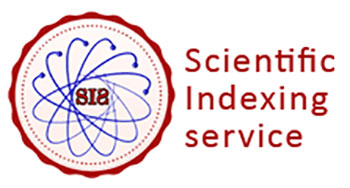
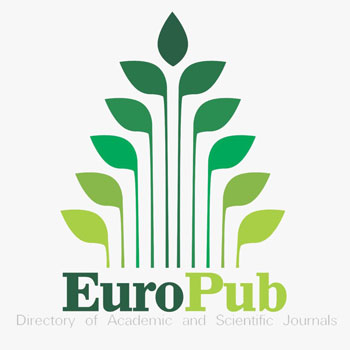

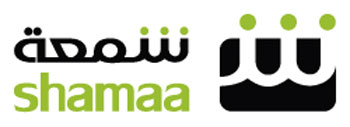
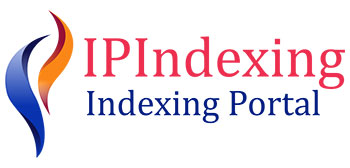

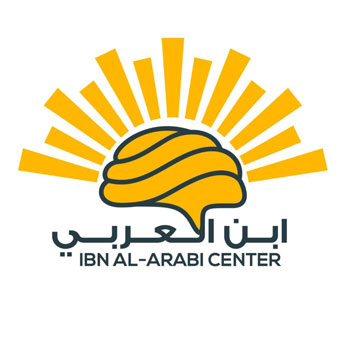



 ElDjawda Soft
ElDjawda Soft